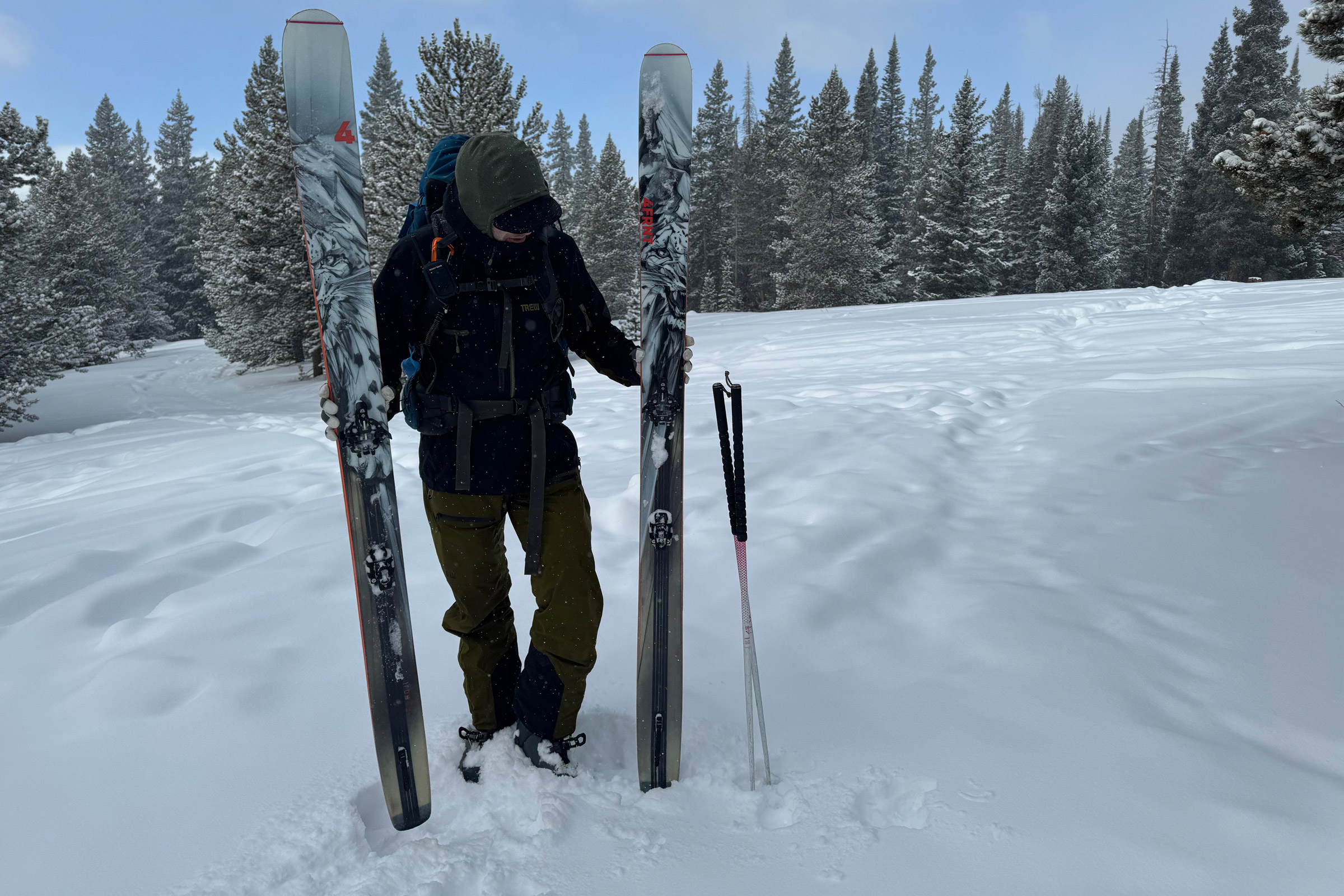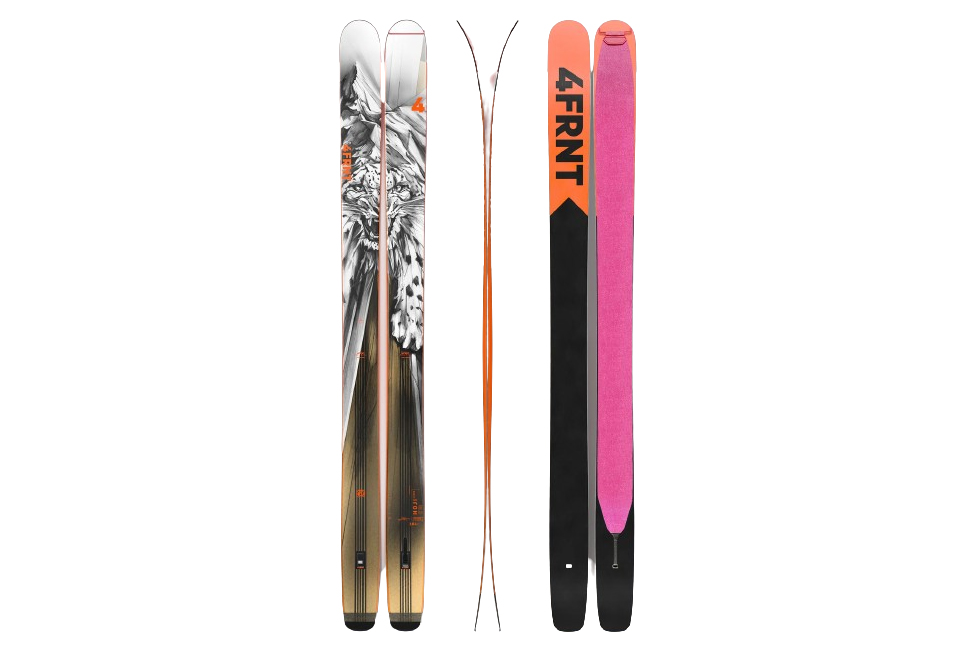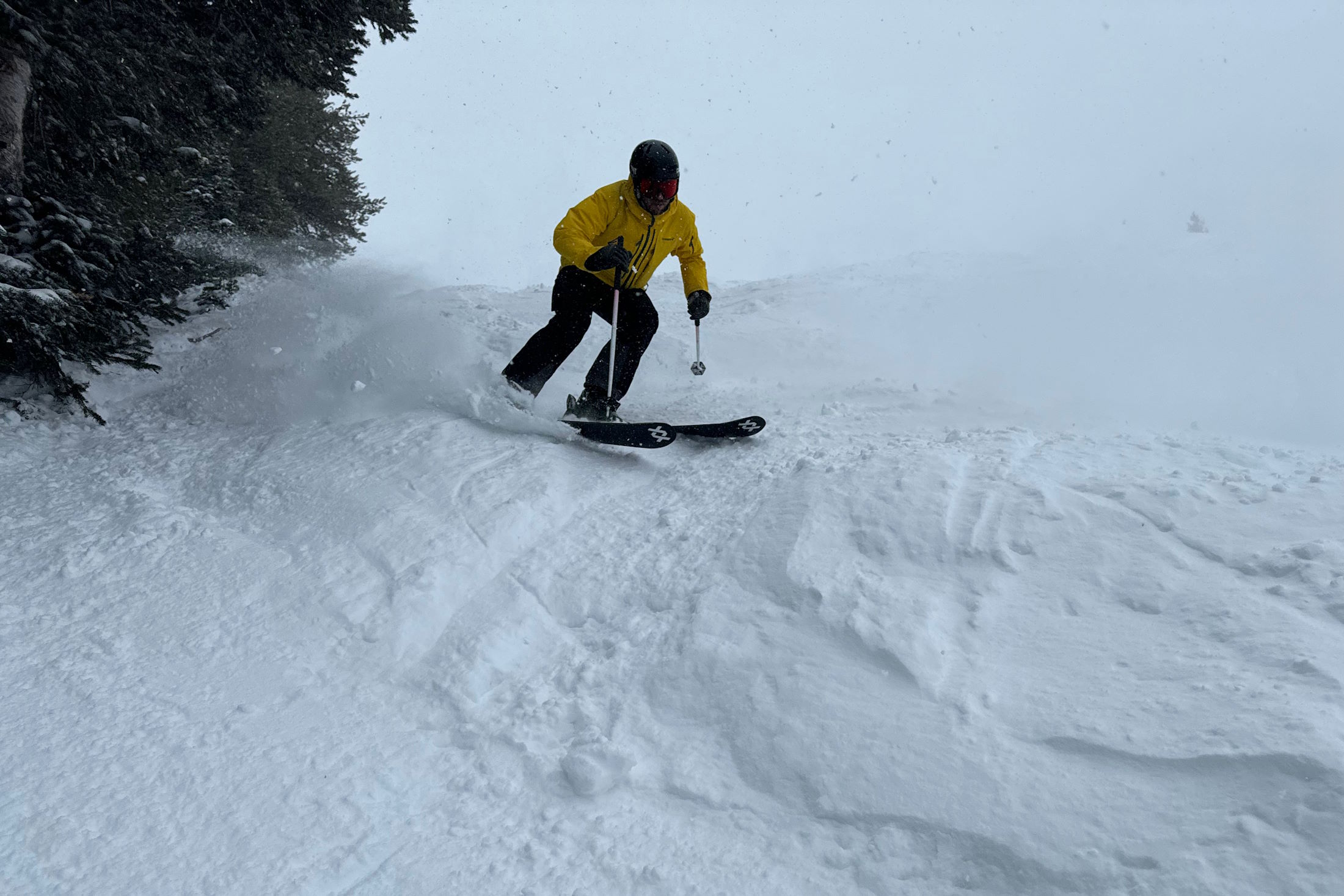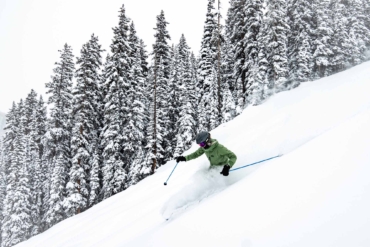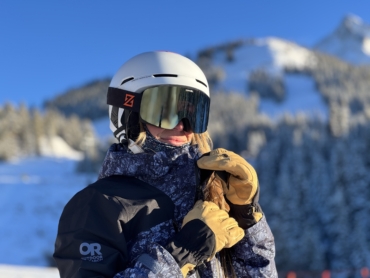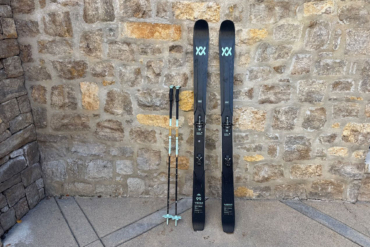It’s flu season and when 4FRNT’s new Hojis with 4-Lock showed up, I was struck — with powder fever. As if I needed another reason to be psyched about skiing powder; those first few turns in the deep stuff on board the 112mm underfoot powder ski were what skiers dream about. I floated and slashed through fluffy snow effortlessly, pivoting, popping, jumping, and surfing.
The skis made me feel like the boss, Eric “Hoji” Hjorleifson, himself.
Then El Niño set in and the powder stopped piling up. That was a bummer, but it also allowed me to test the ski and skin system in a wide spectrum of conditions. Everything from fluffy coldsmoke powder to nasty breakable crust and hardpack.
There’s nothing traditional about the Hojis other than being made from wood. They’re reverse-cambered, nearly center-mounted, shun sidecut, and come with a hole punched in each tail. I endured a learning curve, but man, was it a fun ride.
In short: 4FRNT’s new Hoji skis ($979), now with their signature 4-Lock skin system, transcend traditional ski design and skin integration. Their fully reverse camber and slim sidecut numbers make them outlandishly fun in deep snow. They’re powder skis through and through. Thanks to a reasonable weight-to-skiability ratio and integrated skin system focused on uphill efficiency, they’re at home on the skin track, but they’ll pull double duty at the resort, too.
They’re not the right tool for hard snow conditions, and yet they’re manageable when the snow trends toward soft. Advanced and expert skiers ready to adapt to an innovative ski shape will be thrilled to hop on the Hojis when the powder starts piling up.
- Dimensions: 128-112-120 mm
- Weight: 2,066 g (191cm length)
- Sidecut radius: 30 m
- Effective edge: 1,370 mm
- Mount point from tail: 885 mm
- Tip height: 92 mm
- Tail height: 37 mm
Pros
- Phenomenal in powder
- Exceptionally agile and quick turning
- 4-Lock is innovative and secure skin attachment system
- Light for a hard-charging freeride ski
Cons
- Out of place in hard snow
- 4-Lock system requires proprietary parts, which are not widely available
4FRNT Hoji Skis With 4-Lock Skin Locking System: Review
4-Lock Skin System
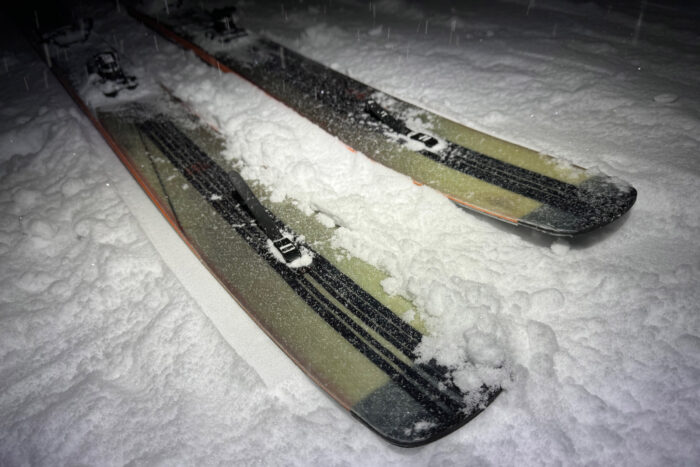
It’s impossible to miss the hole punched in each ski’s tail — the Hoji Hole. The brand’s signature 4-Lock skin system utilizes the hole to add more security to the skin attachment. The brand claims that this locking system eliminates skin failure and reduces their carry weight. You can purchase the Hojis with or without this system.
Donning the 4-Lock skins is easy. It’s as simple as looping the tip clip over the ski’s tip, lining up the skin over the ski, and threading the tail tether and 4-Lock block through the 12x9mm Hoji Hole.
A satisfying snap lets you know it’s locked. It takes about as long as any other skin.
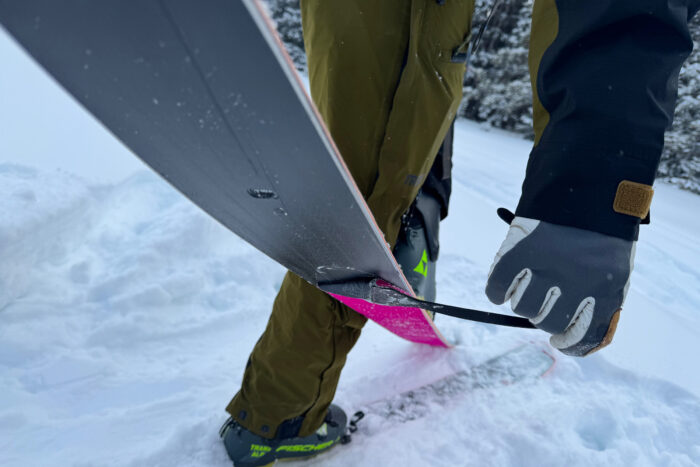
It took me a few days to nail the tour-to-ski transition, though. At first, the 4-Lock block was more difficult to manipulate with one gloved hand than a typical tail clip. For a while, it felt like trying to pull a square peg through a round hole. The tolerances felt tight.
Then after weeks of skiing the system, I realized that I had set up the tail block backward. When I flipped it around, it popped in and out of the ski like butter. Total user error on my part. They release just as fast as other skins.
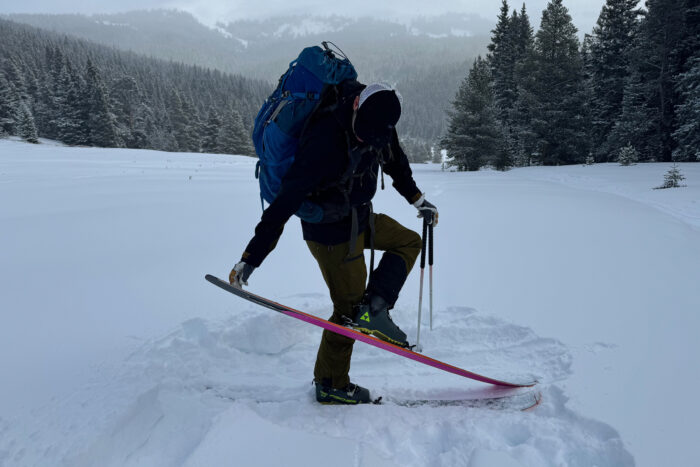
The 4-Lock system does one thing better than any other skin system that I know of: Lock skin to ski. Even when my skins froze after a bunch of laps in freezing, powdery conditions, the skin stayed locked to the ski. They slid around a little bit, but I never dropped a skin. In fact, I haven’t dropped a skin or a tail clip once all season, and that’s a reason to celebrate.
Proprietary parts and fittings can get annoying fast. Just ask mountain bikers. You’ll need the proprietary Pomoca skin with the special 4FRNT tail clip to use the Hoji Hole. Like with other proprietary parts, that raises two issues. First, you’re beholden to 4FRNT’s stock of 4-Lock skins, and second, you’ve only got one skin choice.
I’m not fretting about either of those caveats, though. You can always slap a different skin with a traditional tail clip onto the Hojis and skip the Hoji Hole. The ski’s tail isn’t notched, however, so the skin will slide off from time to time. If I were going this route long-term, I’d break out the Dremel and add a notch myself.
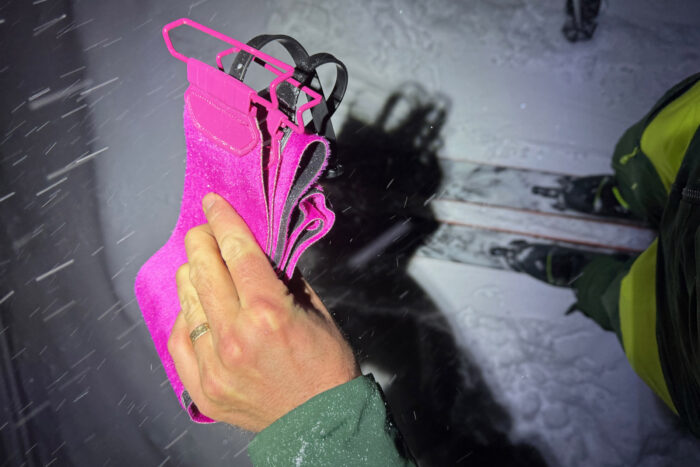
Fortunately, 4FRNT and Hoji went with one of the best skins on the market for the 4-Lock System. So, it’s not like you’re stuck with a lemon. I’ve been on several pairs of the Pomoca Free Pros over the years, and they’re slick. Literally, they are slick in that their pure mohair glide is like a skimo race skin. In fact, it’s the same formula that Pomoca uses in their race skins. They’re also super thin, light, and pack up small.
But high performance comes at a cost. At $230, they aren’t cheap. They also don’t last as long as Pomoca’s other offerings with nylon mixed into the formula. Being so thin, they’re also the most vulnerable to tears. I’ve gotten two seasons out of a pair in the past, but just barely. So far, the proprietary 4FRNT-branded Free Pro 2.0s have been flawless and show very little sign of wear.
Skiing the Hoji
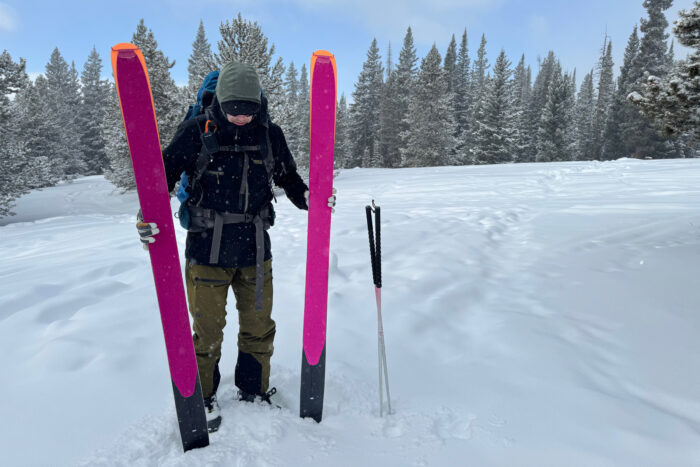
Nobody will be surprised to hear that the Hojis are incredibly fun in powder. At one point, I wrote a note in my pocket notebook while testing the skis on a powder day: “As much fun as you can have on skis.”
I stand by it. They were just so dang fun in the fluffy stuff. They had that buoyant, unsinkable floaty feeling. The purest euphoria. It was tough to stay objective and not fall in love instantly. I said it already and I’ll say it again: They made me feel like Hoji himself.
The fully reverse camber makes these skis float both better and more effortlessly than their dimensions would suggest. They aren’t crazy wide by any means at 128-112-120. The sidecut is minimal, too. Yet the tips refuse to sink.
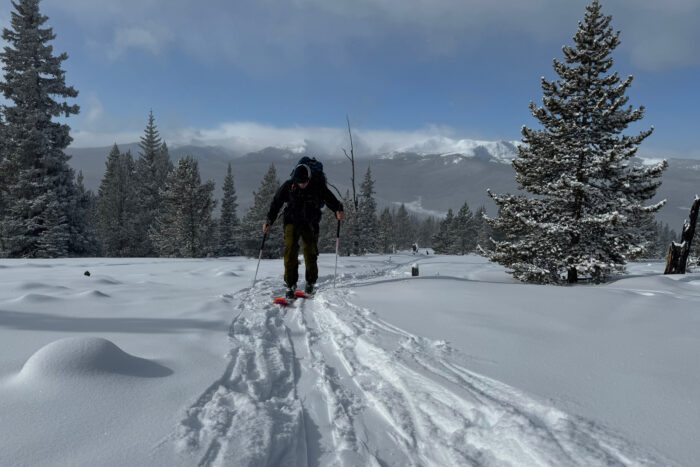
The reverse camber also makes them particularly nimble. They pivot and release from turns remarkably well, so it was easy to quickly change direction and speed when the terrain demanded it. They never felt overly demanding despite the long 191cm length I tested (I’m 185cm tall, for reference). Other adjectives to describe their powder performance? Playful, floaty, stable, intuitive, damp, and rad.
So little sidecut gave them a “send it” attitude in the right conditions. I felt like I could charge and point it straight, jump around, and power through just about anything. And they didn’t feel like an unstoppable freight train — I was still able to shut it down and dump speed quickly with pivoty speed checks.
They excelled in soft, choppy snow, too. Their tapered tips allow them to slice through messy snow without hooking or feeling squirrely. Their aspen/maple core felt damp and predictable while remaining lively. They didn’t deflect erratically or bounce me into the backseat like I half expected.
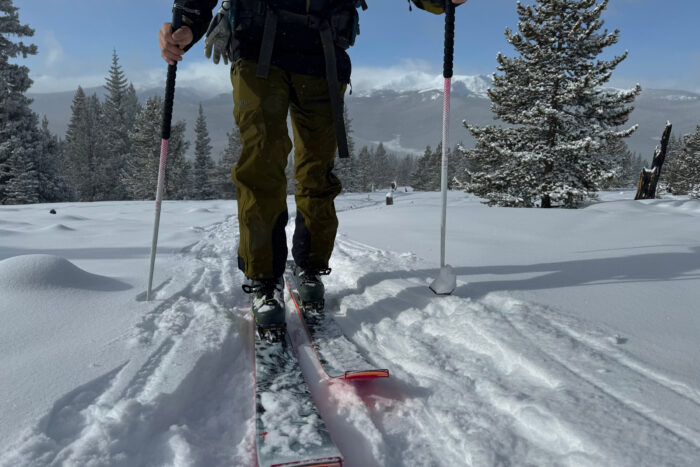
I loved how easily they released from turns in soft chop too — they never felt locked into a line. It made them feel versatile and quick in complicated terrain like skied-out trees and cliffy faces.
They were decently fun on groomers and soft piste when I took them up on the resort. They have a big 30m turn radius and want to go fast. The Hojis never felt like there was a whole lot of edge digging into the snow, though. You really have to push power into the underfoot section of the ski and focus on a centered skiing stance to get them to bite.
It took some getting used to. I had to adapt my natural forward stance to something more centered.
Hard Snow
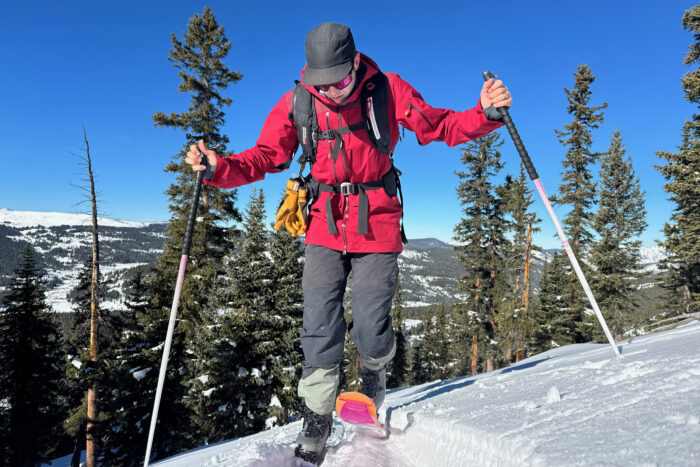
I wasn’t as enamored with their hard snow skiability. It’s the opposite of where they’re designed to excel. They could make it down anything, but it wasn’t pretty or fun in hardpack.
The reverse camber and forward mount meant there wasn’t much to push into up front until I really leaned the ski over on its edge. So little edge length on the snow meant they didn’t feel precise, nor did they stop quickly.
I ended up washing out when I pushed into my boots’ tongues, and the whole experience felt sloppy. Even after adopting a more centered stance, I ended up sliding around more than arcing big turns in hard snow.
They’re powder skis, after all. But even some powder skis, especially ones with some traditional camber, feel more composed and stable in hard snow. My old 4FRNT Kye 110s from 2015 (which I refuse to let die) are a great example. The Hojis felt out of place with so little edge contact.
Despite their hard snow performance, they skied better in less-than-ideal conditions that are so common in the backcountry. They were able to navigate breakable crust, wind-affected snow, and even low snow scenarios better than typical cambered touring skis. They resisted getting locked into tricky conditions, and it felt easier to hop around and release from turns than I’m used to.
4FRNT Hoji Skis’ Weight
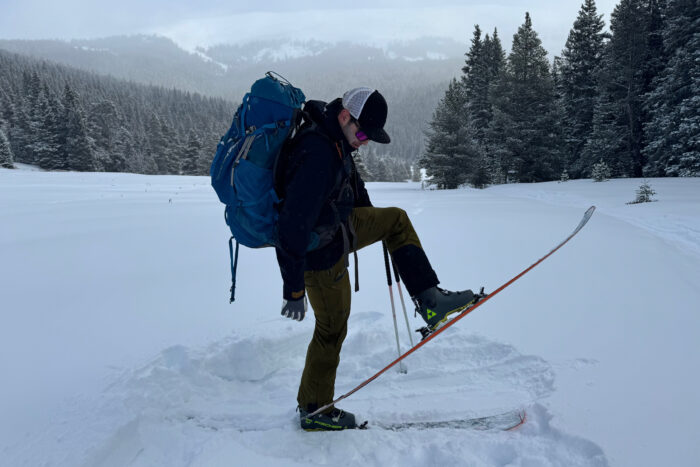
The Hojis aren’t particularly light at 2,066 g in the 191cm size, but I think 4FRNT found a thoughtful balance between weight and skiability. If they were much lighter, they would surely lose some of their freeriding prowess. They could get squirrely fast with all that rocker fore and aft without a little bit of heft keeping things damp and stable.
While some dedicated backcountry skiers scoff at anything over 1,500 g, the Hoji is a specialized powder tool. It’s not the ski for light and fast adventures or mega-long days on the skin track.
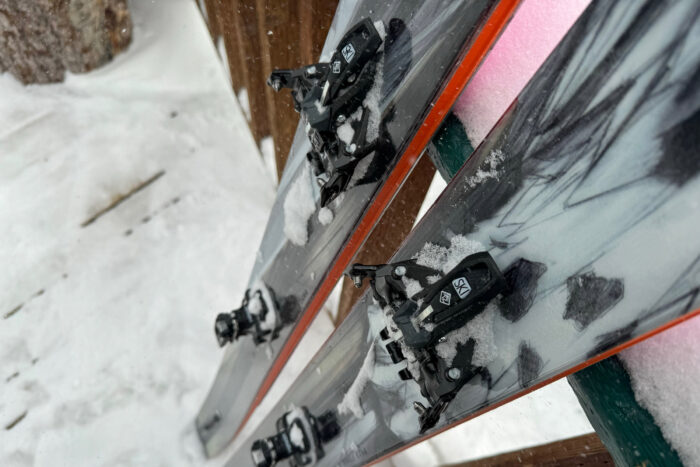
By minimizing weight in my boot and bindings, I was able to put together a relatively lightweight package that ended up being more than reasonable for a dedicated backcountry ski.
That started with my 1,280g Fischer Transalp Carbon Pro Boots, which are the lightest boots I’ve tried that are substantial enough to drive a ski this big. They powered the 191cm Hojis through powder and soft chop, and I didn’t die in breakable crust.
After debating going with a 50/50 resort/backcountry binding like Marker’s Kingpin, I mounted the Hojis up with my favorite lightweight touring binding, Marker’s Alpinist 12. At 540g per pair, they’re about as light as you can go while still having some heel elasticity. They’ve helped keep the whole package reasonably lightweight while retaining good, damp skiing characteristics.
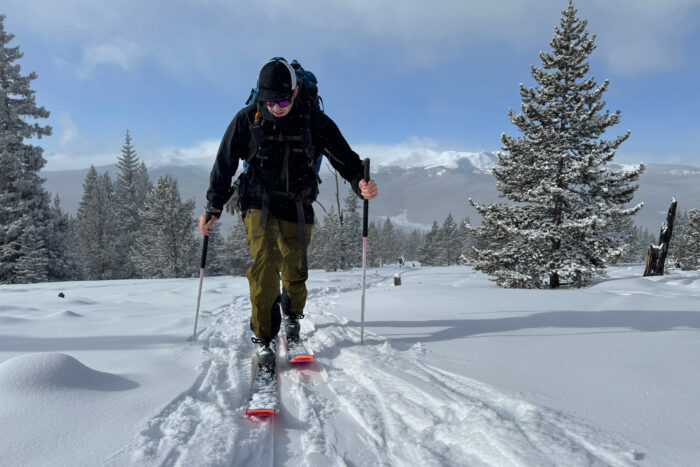
The Hojis glide like a much narrower, lighter ski than their specs would suggest because there isn’t any excess skin in contact with the snow thanks to the reverse camber. The flip side is that they don’t grip as well on steep, icy switchbacks as something with more skin-to-snow contact.
I’ll take the better glide, though — it reduces the effort of hauling such a big ski uphill. You can always mitigate a lack of grip with more kick turns.
4FRNT Hoji Skis: Who Are They For?
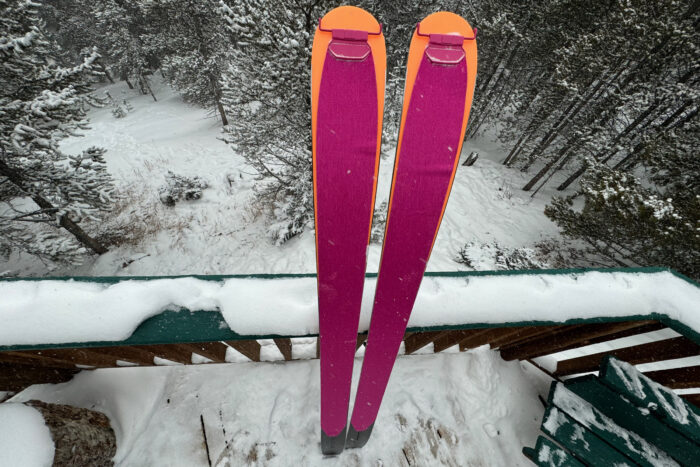
It took me a few days to connect with the Hojis in conditions other than powder. Their reverse camber and long turn radius would not be the easiest combo for intermediate or beginner skiers. Instead, they’re for advanced and expert skiers looking for a specialized powder ski who are willing to adapt their skiing style.
I wouldn’t consider the Hoji to be the most versatile one-ski quiver or a daily driver for resort or backcountry unless you’re lucky enough to live where the snow never stops falling. They’re dedicated powder skis that can function great inside or outside the resort boundary. They’re light enough for backcountry when paired with a light boot and binding, but sturdy and powerful enough for fast and loose freeriding.
Conclusion
Want to ski like the Boss when the fluffy snow is stacking up? The Hojis will take you there. They’re phenomenally fun, nimble freeride powder skis. They’re not the right ski for hard-snow conditions, but they come alive when the snow is soft.
Plus, they have a trick up their sleeve: The innovative 4-Lock skin system. It drops the weight further on a light-enough-for-touring package and boosts the skin track glide. And while it comes with a proprietary parts dilemma, it refuses to drop skins. They’re locked on there.
Advanced freeriders looking for an exceptional, dedicated powder ski that can tour the backcountry or shred powdery lines at the resort will be thrilled with the Hoji in the right conditions. Throw the 4-Lock skins in the cart, too. They’re a step forward in skin evolution.
